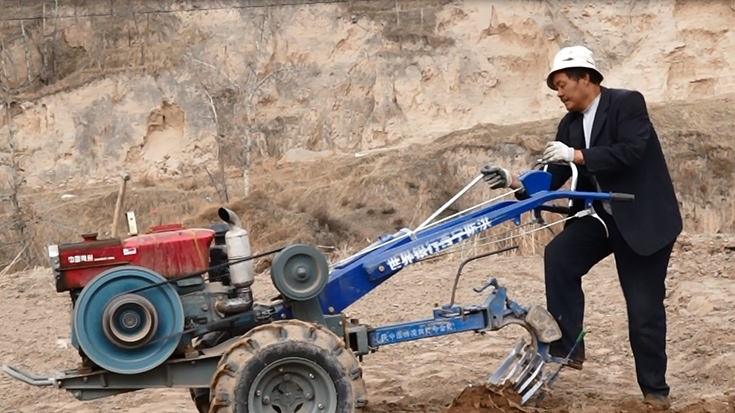Xining, China – Xining, the capital of Qinghai province in western China, and the largest city on the Tibetan Plateau, lies in the Huangshui River valley. Surrounded by steep barren mountains and situated on heavily eroded bedrock, the city is exposed to periodic flash floods caused by intense rainfall, especially during summer.
Flooding often comes with soil erosion – in Xining, 61% of the watershed is considered vulnerable to soil erosion, putting people’s lives and livelihoods at risk.
Since 2009, the Xining Flood and Watershed Management Project has been assisting Xining Municipality to improve its capacity in flood protection, increase wastewater collection, and improve soil and water conservation in 17 watershed areas.
More than Flood Control
Flood-protection infrastructure built through the project, such as dikes, access roads, and wastewater and storm water collection pipeline systems, will help Xining withstand a “100-year flood” (or a really big flood that the city should expect to happen about once every 100 years).
A state-of-the-art flood warning center was also built, setting up a comprehensive system for flood forecasting and warning in the city.
Beyond these improvements, the beautiful landscaping surrounding the riverbanks made it a popular spot for recreation for the 2.2 million residents of Xining.
Li Kengcheng is 84 years old and has lived near the Beichuan River, a tributary of Huangshui River which runs through the city of Xining, for over thirty years.
“The riverbank was all coarse gravel. No one would come here,” he says. “After the river was cleaned up and the road was paved, we come here whenever we have time, to sunbathe or just spend some time together.”
Project officials say that what made this project a success is “integrated” flood risk management which included both structural and non-structural activities.
“Starting with project design, we adopted an integrated approach to flood management, not simply focusing on building dikes or planting trees as we had in the past. The project has set a good example by integrating watershed rehabilitation, flood control works, river bank revamping, wastewater collection and environmental improvement,” says Chen Sheng, a manager with the Project Management office in Xining Municipality.

